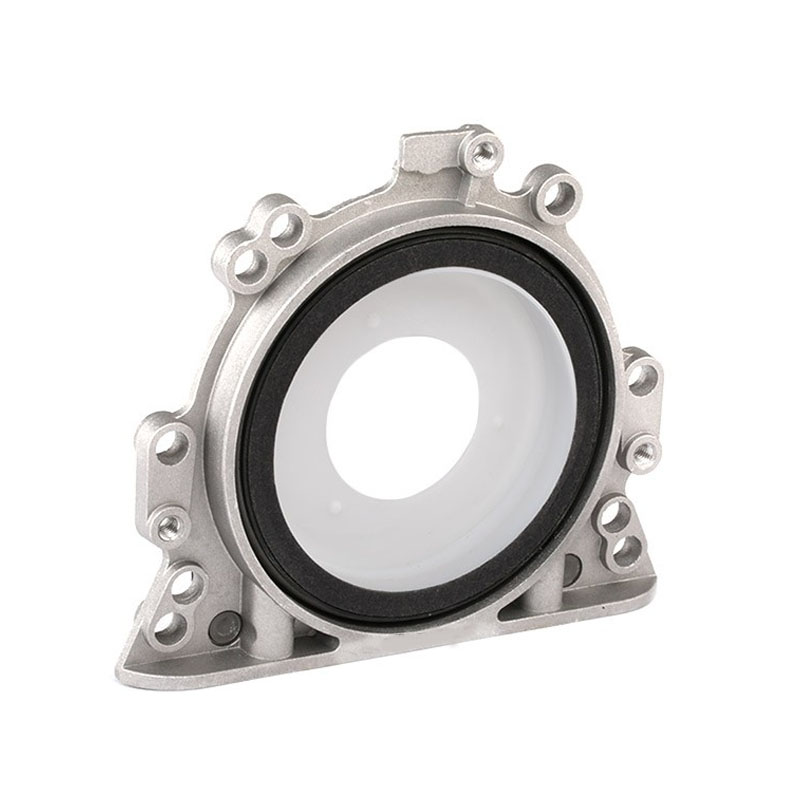crank pulley oil seal
Understanding Crank Pulley Oil Seals Importance and Maintenance
The crank pulley oil seal is a crucial component in an internal combustion engine that plays a vital role in maintaining the performance and longevity of the motor. Positioned at the front of the engine, the crankshaft pulley works in conjunction with the oil seal to prevent engine oil leakage, which could lead to significant damage if left unaddressed. This article explores the different aspects of crank pulley oil seals, their importance, signs of wear, and maintenance tips for vehicle owners.
What is a Crank Pulley Oil Seal?
The crank pulley oil seal is typically made of rubber or a similar material that is designed to withstand high temperatures and pressures. It sits snugly around the crankshaft, which is connected to various engine components, including the harmonic balancer and timing belt. As the crankshaft rotates, the oil seal forms a barrier to prevent engine oil from leaking out, thus ensuring that the engine remains properly lubricated.
Importance of Crank Pulley Oil Seals
The importance of a properly functioning crank pulley oil seal cannot be overstated. Firstly, it contributes to the overall efficiency of the engine by maintaining optimal lubrication. When oil leaks occur, it not only reduces the engine’s ability to function but also leads to higher operational temperatures that can accelerate wear and tear. Additionally, oil leakage can create a mess both within the engine bay and on the roadway, potentially leading to safety hazards.
Furthermore, a compromised seal can result in contamination of the engine oil, as dirt and debris may enter the system, leading to increased wear on internal components. In severe cases, this can lead to engine failure, requiring costly repairs or even a complete engine replacement.
crank pulley oil seal

Signs of Wear and Tear
It is crucial for vehicle owners to be vigilant about the health of their crank pulley oil seal. Some common signs that indicate it may need replacement include
1. Oil Leaks Puddles or spots of oil under the vehicle can signify a failing oil seal. 2. Engine Noise Unusual noises, especially whining or grinding sounds, can indicate that the seal is failing. 3. Decreased Oil Levels Frequent oil top-ups may suggest that oil is leaking from the seal.
Maintenance Tips
Regular maintenance can extend the life of the crank pulley oil seal and prevent catastrophic engine failures. Here are some tips for vehicle owners
1. Regular Inspections Periodically check the engine bay for signs of oil leaks or wear around the seal. 2. Change Oil Regularly Keeping up with scheduled oil changes can help maintain the overall health of the engine and its components. 3. Address Any Engine Noise Promptly If you notice any changes in engine noise, investigate the issue sooner rather than later to prevent further damage.
In conclusion, neglecting the maintenance of the crank pulley oil seal can lead to severe engine issues and costly repairs. By understanding its function, recognizing the signs of wear, and practicing regular maintenance, vehicle owners can help ensure that their engines remain in peak condition. Taking these proactive measures will not only enhance engine performance but also extend the vehicle’s lifespan.
-
Understanding the Front Main Engine Seal: Purpose, Maintenance, and Installation
News Jul.29,2025
-
Understanding O-Rings and Seal Rings: Types, Applications, and Custom Solutions
News Jul.29,2025
-
Understanding Crankshaft Oil Seals: Rear Seals, Pulley Seals, and Their Role in Engine Integrity
News Jul.29,2025
-
The Importance of Front and Rear Crankshaft Seals in Engine Performance and Oil Management
News Jul.29,2025
-
Crank Oil Seals: Functions, Types, and Cost Considerations in Engine Maintenance
News Jul.29,2025
-
A Comprehensive Guide to O-Rings and Seals: Types, Materials, and Global Applications
News Jul.29,2025
-
Mastering Diesel and Performance Engine Maintenance: A Guide to Critical Oil Gaskets
News Jul.28,2025
Products categories















